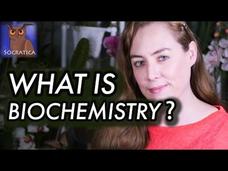Bozeman Science
AP Biology Labs - part 2
Paul Andersen explains the final 6 of 13 AP Biology Labs. The following topics are included: Transformation, Restriction Analysis of DNA, Energy Dynamics, Transpiration, Animal Behavior, and Enzyme Activity.
Bozeman Science
AP Biology Lab 5: Cellular Respiration
Paul Andersen explains how a respirometer can be used to measure the respiration rate in peas, germinating peas and the worm. KOH is used to solidify CO2 produced by a respiring organism.
Bozeman Science
AP Biology Lab 9: Transpiration
Paul Andersen starts by defining transpiration as evaporation off of a leaf. He then describes how a potometer can be used to measure the rate of transpiration in different environments.
Bozeman Science
Cellular Respiration Lab Walkthrough
Mr. Andersen walks you through the cellular respiration lab.
Curated Video
Calorimetry: Measuring Energy Content of Food
This video explains the concept of calorimetry. The video demonstrates how to use calorimetry in a school lab to measure the energy content of food. It goes through the steps of the experiment and how to perform fair testing, as well as...
Curated Video
Gravity Assist: Gardens at the Bottom of the Sea, with Laurie Barge
Laurie Barge, an astrobiologist at NASA’s Jet Propulsion Laboratory, studies how plant-looking mineral structures called chimneys grow from chemicals found at the deepest depths of the ocean. In her lab she has glass vials and bulbs full...
Curated Video
Culturing Microorganisms Part 1 | Cells | Biology | FuseSchool
Culturing Microorganisms Part 1 | Cells | Biology | FuseSchool Bacteria are a type of microorganism. If they have enough nutrients and are in a suitable temperature, bacteria can multiply once every 20 minutes. So, after one hour a...
Science360
Fire Ants: Coping with These Invasive Insects - Science Nation
Invasive animals are often most abundant in habitats impacted by humans, especially man-made habitats, such as roadsides, suburban and urban developments, and areas of intensive agricultural activity. Understanding why this is true may...
Curated Video
Culturing Microorganisms Part 1
Bacteria are a type of microorganism. If they have enough nutrients and are in a suitable temperature, bacteria can multiply once every 20 minutes. So, after one hour a single bacterium could have reproduced to give eight bacteria. They...
Science360
Ancient shark in 3D, scary robofish, skin cancer answer, crops in deep water: 4 Awesome Discoveries
Ancient shark in 3-D, scary robofish, skin cancer answer, and crops in deep water. It’s 4 Awesome Discoveries You Probably Didn’t Hear About. 3-D reconstructions show how ancient sharks found an alternative way to feed...
Curated Video
Directional Vocabulary for IELTS Academic Task 1 Map Questions
Directional Vocabulary for IELTS Academic Task 1 Map Questions
TED Talks
Bilal Bomani: Plant fuels that could power a jet
Algae plus salt water equals ... fuel? At TEDxNASA@SiliconValley, Bilal Bomani reveals a self-sustaining ecosystem that produces biofuels -- without wasting arable land or fresh water.
Curated Video
The secret history of dirt
Dirt isn’t just the stuff beneath our feet. It’s the stuff of life. Welcome to our first-ever week of programming for kids! Become a Video Lab member! http://bit.ly/video-lab Dirt is alive. It's full of billions of creatures so small you...
Curated Video
How Is Oxygen Used | Properties of Matter | Chemistry | FuseSchool
Learn the basics about the properties of oxygen. Oxygen is a gas, it has no smell, colour, or taste; but without it, we as humans would not be able to inhabit planet Earth. When cooled to a very low temperature, it will form a liquid and...
Catalyst University
Resonance Fluorescence: A Special Case of Fluorescence
Resonance Fluorescence: A Special Case of Fluorescence
Fuse School
Green Chemistry - Principle 8
Energy conservation is a global effort, but how can chemists aid the cause? The narrator in the eighth installment of a 12-part Green Chemistry series describes the importance of reducing reactant waste while performing reactions with...
Curated OER
STEMbite: Diffusion
A biology or physical science class would benefit from viewing this video on diffusion and molecular motion. Mr. Vanden Heuvel plays with food coloring in drinking glasses, showing that the faster the water molecules are moving due to...
Socratica
What Is Biochemistry?
Watch as chemistry comes alive! Socratica's biology playlist kicks off with a simple video detailing the principle components of biochemistry. Content includes carbohydrates, proteins, and nucleic acids. The narrator describes each class...








